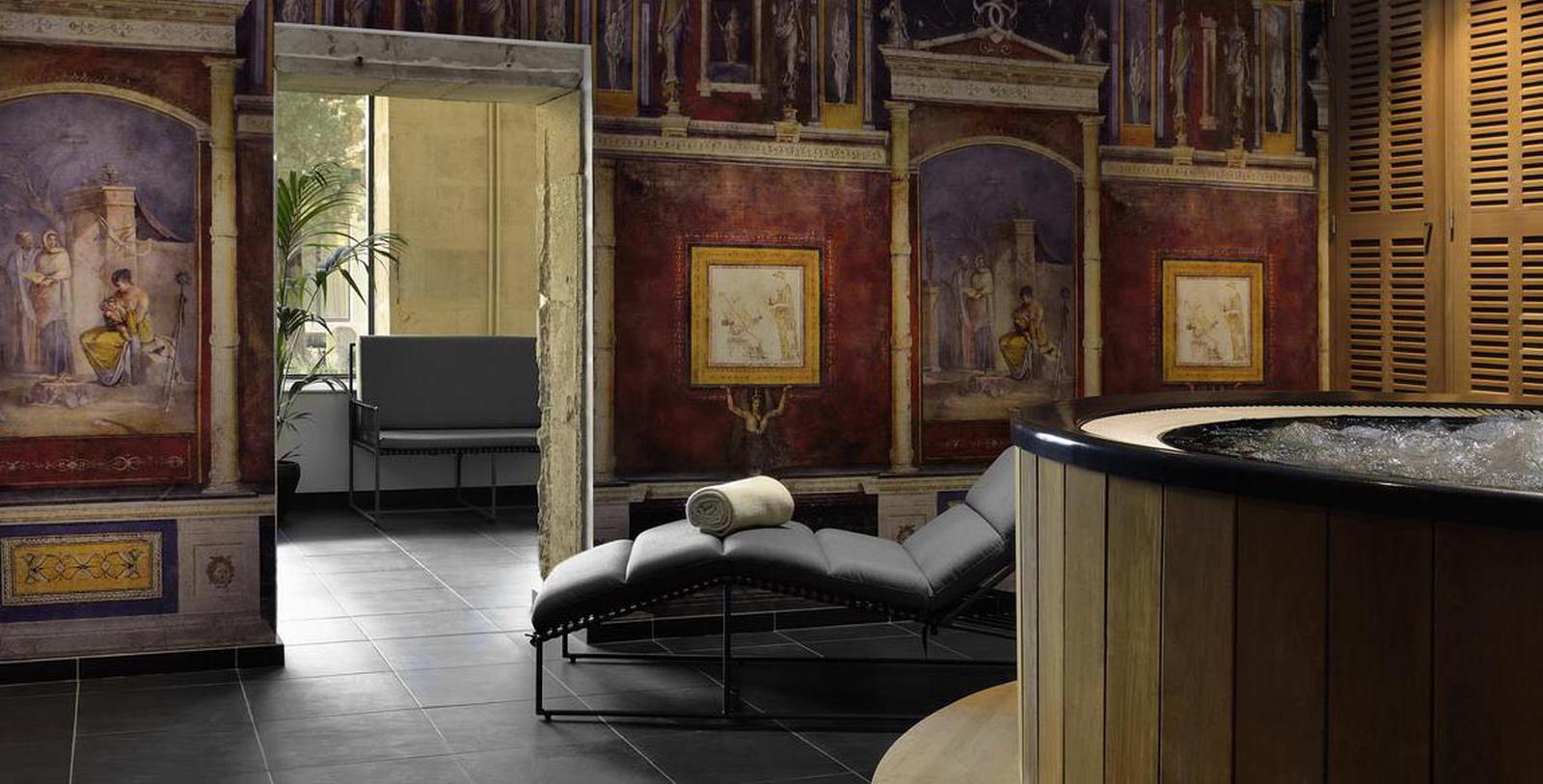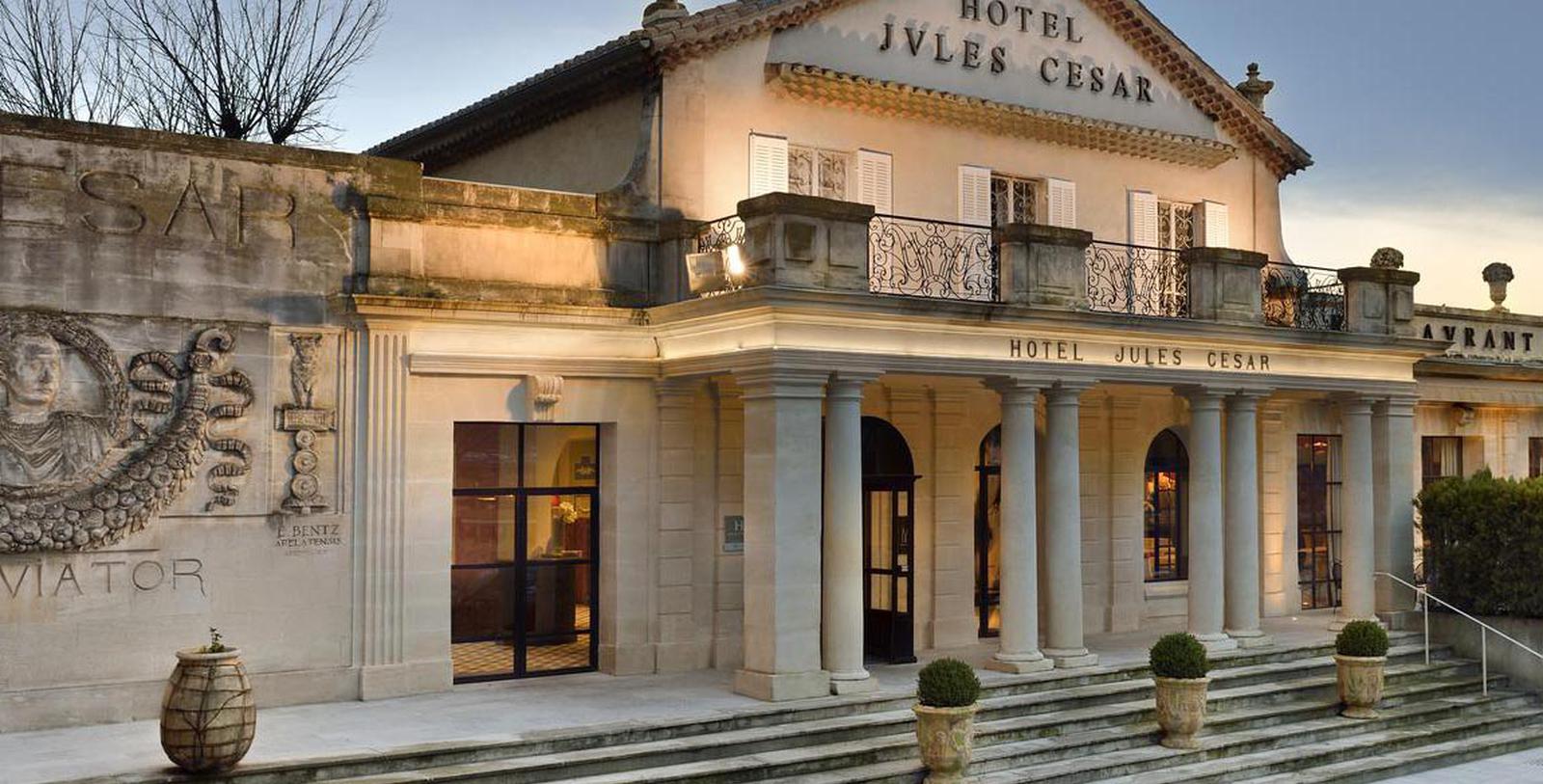Receive for Free - Discover & Explore eNewsletter monthly with advance notice of special offers, packages, and insider savings from 10% - 30% off Best Available Rates at selected hotels.
history
Discover the Hôtel & Spa Jules César Arles – MGallery by Sofitel, which was once a Carmelite nunnery founded during the 17th century.
Hôtel & Spa Jules César Arles – MGallery by Sofitel was constructed during an era marked by global exploration that defined much of the 15th through the 17th centuries.
Throughout the 17th century, the City of Arles rapidly grew into one of France’s busiest metropolises. Waves of immigrants arrived in the port, causing it to flourish. Among the city’s new transplants were an order of Carmelite nuns, who were in need of a new place to worship. The sisters purchased a plot of land on which to construct a convent, as well as an accompanying chapel. By 1634, the construction on the Carmelite complex was complete. A series of notable figures from Arles approached the nuns less than a decade later, inquiring as to whether they could add a public house for the city’s poor. The nunnery assumed the project as its own personal mission for the next twenty years, working closely with its local benefactors to raise the appropriate funds for the building’s creation. But the nuns had fallen short of their fiscal goals by the beginning of the 1660s. Fortunately, salvation came in the form of Archbishop François de Grignan. On the sisters’ behalf, he successfully galvanized support throughout the city to help finish the building’s development. Completed in 1661, the shelter debuted before the public as the Hospice of Charity. The Hospice of Charity became a home for the poor and employed many of the homeless, as begging was illegal.
The small Carmelite order lived cloistered within the complex over the next two centuries. Their time at the nunnery came to an end with the onset of the French Revolution. The National Assembly of France suppressed many monastic orders during the uprising. Among its many targets included the Carmelite complex in Arles. In 1791, the National Assembly confiscated the sisters’ nunnery, leaving only its public house alone. Eventually, the Hospice of Charity relocated its operations into the former convent, having felt that its own facilities had become too derelict. The Hospice of Charity continued to occupy the site until 1928, when several entrepreneurs transformed the erstwhile convent into a luxury hotel. The location quickly developed a reputation as a world-class holiday retreat. Intellectuals from across the globe soon visited the hotel regularly, such as Ernest Hemingway and Pablo Picasso. Even members of the British Royal Family resided at the building for considerable periods of time. King George VI in particular was known to patronize the hotel!
By the beginning of the 21st century, time had clearly taken its toll on the building. Sofitel had come to acquire the location by the 2010s, deciding that the historic building was in desperate need of a thorough renovation. Celebrated fashion designer Christian Lacroix led the makeover and brilliantly combined elements of the location’s stunning 17th-century character with contemporary artistic flair. Reopening in 2014, the ancient convent debuted as the magnificent Hôtel & Spa Jules César Arles. Sofitel has been incredibly pleased with the hotel since its fabulous rebirth. The Hôtel & Spa Jules César Arles continues to serve as one the leading travel destinations along the Gulf of Lion. As Lacroix said himself, “People who stay at the hotel are not only looking for a second home; they are looking for one that tells a story.”
-
About the Architecture +
The history of the Hôtel & Spa Jules César Arles – MGallery by Sofitel starts in the city of Arles, France. Founded during the 6th century B.C., Arles possesses over two millennia of remarkable history. This wonderful ancient metropolis features significant historical accolades, such as serving as an important Roman seaport, as well as being the muse for Vincent Van Gogh’s artwork. Famous cultural attractions abound throughout Arles, with spectacular destinations like the Alyschamps located only a short distance away from the Hôtel Jules César. Many of these landmarks constitute the city’s breathtaking UNESCO World Heritage Site.
-
Famous Historic Guests +
Ernest Hemingway, celebrated author known for writing such books like A Farwell to Arms and The Old Man and the Sea. Pablo Picasso, world-renowned artist celebrated for his cofounding of the Cubist art movement. King George VI of the United Kingdom (1936 – 1952)


























